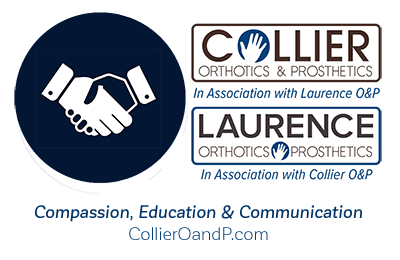A Reciprocating Gait Orthosis (RGO) helps lower paralysis patients stand and walk!
RGO’s are enabling people with mobility impairments access to the latest technology to walk and participate in over-ground gait training for adults and children. Our RGO-experienced practitioners provide support throughout the entire process from first fitting to ambulation device training. If you think a reciprocating gait orthosis can improve your daily living, please talk to your general practitioner about a referral and send us a message below.
Sandra’s RGO Story
Sandra has had amazing results with her RGO journey because she worked towards her goal every day. We admire her persistence and positive outlook. When we met Sandra, the biggest challenge she faced was overcoming her unstable gait due to a spinal cord injury.
After depending on a wheelchair for almost five years, Sandra met with Practitioner Brian Lee, and expressed her desire to stand up and walk. They got to work and after six months of determined effort, Sandra gained the stability to stand and transfer the strength and momentum of her upper body to her legs. She can now ambulate and feels the sensation of lower extremity muscle contraction. She is very hopeful to continue to progress toward independent ambulation.
What is a reciprocating gait orthosis (RGO)?
An RGO allows the user to create reciprocal (forward and backward) movement of the legs, and to regulate their gait while walking. It is meant to assist those with paralysis of the lower trunk, hips and lower extremities stand and walk. The hip dual-cable mechanism is designed so hip extension on one leg can assist hip flexion on the other leg, creating an energy-efficient gait.
Who is a good candidate for an RGO?
- Children with Spina Bifida
- Children with Unilateral Hip Dislocations and limb length inequalities
- Adults with lower limb paralysis
A specialist is needed to determine the RGO that is right for the patient’s neurosegmental level and other indications.
For a patient to use the RGO successfully, there are deliberate, sequential steps that must be taken by the user to initiate walking. This device is not for everyone – there is a high level of training needed for success. The patient is expected to have good upper body control and be able to use the assistive devices that are necessary for balance and control.
For more details on the principles of operation and RGO patient selection, our friends from Fillauer put together this pdf.
How exactly does an RGO work?
The RGO orthosis consists of a right and left knee-ankle-foot-orthoses (KAFO) or ankle-foot-orthoses (AFO) attached to drop lock knee joints, which are then connected to a pelvic section with a reciprocating mechanism.
The mechanism works by a pivot joint and a spring-loaded hip hinge on the back piece creating a hip flexion force for the swinging limb while the trailing, weight-bearing limb is brought into extension, thus loading the hip hinge in preparation for the next cycle of flexion.
When the sequence is initiated, the result is the patient being able to take a step powered by their own efforts! You can watch this video to see the mechanism demonstrated with a pediatric RGO.
Our specialists are happy to answer any questions you may have about RGO eligibility and the steps it takes to get you moving forward in the process. If you would like to receive our email updates, please let us know below.


